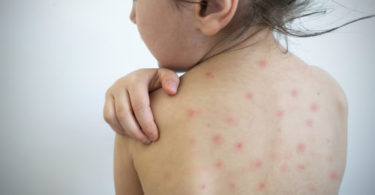Authors: Dr. Pramod Kumar Singh1, Dr. Geeta Sharma2,Dr. Junaid Ahmad3, Dr. Manju Bijarnia4 Dr. Peeyush Tiwari5
1.Professor & HOD of Pharmacy, Dr. M.P.K. Homoeopathic Medical College, Hospital & Research Center, Jaipur, Rajasthan, India.
2.MD Scholar, Department of Pharmacy, Dr. M.P.K. Homoeopathic Medical College, Hospital & Research Center, Jaipur, Rajasthan, India.
3. MD Scholar, Department of Pharmacy, Dr. M.P.K. Homoeopathic Medical College, Hospital & Research Center, Jaipur, Rajasthan, India.
4.MD Scholar, Department of Pediatrics ,Dr. M.P.K. Homoeopathic Medical College, Hospital & Research Center, Jaipur, Rajasthan, India.
5. MD Scholar, Department of Repertory, Dr. M.P.K. Homoeopathic Medical College, Hospital & Research Center, Jaipur, Rajasthan, India.
Abstract: Gout is a metabolic disorder and is an inflammatory disease caused by monosodium urate crystals deposition around synovial joints.Gout is more common in males then females and Gout is the common inflammatory arthritic disease and increase with age and with serum uric acid level. It begins at night with dramatic pain, swelling, warmth and tenderness.
Serum uric acid level is high in males and increase with age and body weight.
Keywords: Gout, Homoeopathic Medicine, Serum Uric Acid,TOPHI.
Introduction:
Gout is a metabolic disorder and is an inflammatory disease caused by deposition of monosodium urate monohydrate crystals in and around synovial joints. The biological hallmark of Gout is Hyperuricemia.
Epidemiology: Gout is more common in males then females and Gout is the common inflammatory arthritic disease and increase with age and with serum uric acid level.
Serum uric acid level is high in males and increase with age and body weight.
Male: Middle age group.
Female: Postmenopausal age group.
Pathophysiology: Urate is the ionized form of uric acid present in the body. Uric acid is a weak acid with pH of 5.8. Urate crystals deposition in tissues starts to occur when serum uric acid level rises above the normal threshold. Pathological threshold of hyperuricemia is defined as 6.8 mg/dL.
Some factors may affect the solubility of uric acid in the joint. These include synovial fluid pH, water concentration, electrolytes level, and other synovial components such as proteoglycans and collagen. Serum Uric Acid level in the body is determined by the balance between its production either from purine intake in diet or endogenous production by cellular turnover and its excretion by the kidneys and GIT. Increased production of Uric Acid is responsible for only 10% of cases of gout while the remaining 90% are caused by its renal under-excretion
Acute Gouty Arthritis: Leukocytes engulf the monosodium urate and there is release of inflammatory mediators and lysosomal enzymes that leads to recruitment of phagocytes into the joint and synovial inflammation
Clinical features:
Acute Gouty Arthritis: It is most frequent presentation and commonly affects fisrt metatarsophalangeal (MTP) joint and also commonly involve ankle, midfoot, knee, small joints of hand, wrist and elbow.
Features :
- It begins at night with dramatic pain, swelling, warmth and tenderness. Attack subside suddenly after 3-10 days.
- Rapid onset and reaching severity in 2-6 hours and pain is too severe tp waking the patient in early morning.
- Extreme tenderness ,patient is unable to wear a sock or to let bedding rest on joint.
- Marked swelling with overlying redness, shinny skin.
- During attack joint show sign of synovitis, swelling and erythema.
- There may be fever, malaise and confusion when involvement of large joint.
Some patient have single attack of gouty pain but mostly the patient have recurrent episodes with asymptomatic stage.
It is precipitated by dietary excess, trauma, surgery, excessive ethanol ingestion, hypouricemic therapy, serious medical illness like myocardial infarction and stroke.
Chronic arthritis: Chronicity is a feature of gout. It results from chronic inflammation that follows recurrent attacks of gout. Chronic gout manifests by chronic synovitis, bony erosions, cartilage damage and tophi formation. This can be explained by different mechanisms. Presence of urate crystals in the synovium leads to stimulation of chondrocytes to produce inflammatory cytokines, nitric oxide and matrix metalloproteases resulting in cartilage damage.
A proportion of gout patient may have a chronic nonsymptomatic synovitos, may rarely be the only manifestation. Can also present with particular TOPHI( aggregates of MSU crystal surrounded by gaint cell inflammatory reaction). It occur in the setting of long standing gout.
Diagnosis:
- Synovial fluid analysis
- Serum uric acid
- Urine uric acid
- Screening for risk factor: Urinalysis, serum creatinine, liver function test, glucose and lipid, CBC.
- Joint X-ray: may demonstrate cystic changes, erosion with sclerotic margin in chronic arthritis.
D/D: Septic arthritis , reactive arthritis, calcium pyrophosphate dehydrate deposition disease, rheumatoid arthritis.
Treatment:
- Symptomatic relief
- Analgesia
- NSAIDs: Treatment of choice when not contraindicated.
Homoeopathic Remedies for Gout:
Benzoic acid- This medicine used for gout especially of the knee or big toe. Tering pain in affected joints,cracking on motion. Symptoms of gout associated with highly colored & offensive urine.Symptoms worse in open air & from uncovering. Gout due to excess of uric acid.
Urtica urens- Patient has tendency to gout & uric acid formation. Joints affected with urticaria like eruptions. Pain in ankles,wrist & deltoid region. Worse from exposure to cool moist air, snow air,touch.
Colchicum-Inflammation of great toe, gout in heel, patient cannot bear to have it touched or moved. Tearing in limbs during warm weather and stinging during cold. Joints are red, hot, & swollen. Pain worse in evening & night. Stiffness of joints. Patient feels feverish.
Ledum palustre- Gouty pain shoots all through the foot & limb. Swelling on foot & ankle. Pain and swelling better by ice cold application. Swelling of fleshy part of great toe. All affected joints are stiff and red, worse at night & from heat of bed.
Lycopodium- This medicine for chronic gout with chalky deposits in joints. Profuse sweat on the feet,pain in the heels on treading as from a pebble. One foot feels hot & the other is cold. Backache relieved by passing urine. Right side more affected. Urine is slow to produce & heavy, red sediment. Worse from 4 to 8pm, from heat, warm room, feels better by motion, from being uncovered.
Rhododendron- Gouty symptoms well marked of this remedy. Gouty swelling of the big toe joints that flares up before a storm. Right side more affected, feels better from warmth & after eating. Person cannot sleep unless legs are crossed. All symptoms reappear in rough weather.
Calcarea fluorica- Finger joint enlarged due to gout, and the knees and toes may be involved. Exostoses on fingers. Cracking on joints. Worse during rest, change of weather. Better heat, warm application.
Antimonium crudum- It is used when a patient experienced gastric symptoms along with joint pain & inflammation. Pain is violent, numbness of the legs after sitting for some time. Drawing pain in knee. Red swelling of the heel with burning shooting. Burning in the fleshy part of the great toe. Worse in evening, from heat, acid, wine. Better in open air, during rest.
Ammonium phosphoricum- This remedy for chronic gouty patients uric acid diathesis. Heaviness in the limbs. Rose colored sediment of urine, also indicated in bronchitis and nodosities of the joints of the finger and backs of the hands.
Reference:
- Principles and Practice of Medicine-Davidson
- Harrison’s Manual of Medicine
- Dictionary of practical Materia Medica –J.H. Clarke
- Lecture on Homoeopathic Materia Medica- Dr. J.T. Kent
- Homoepathic Materia Medica- William Boericke





